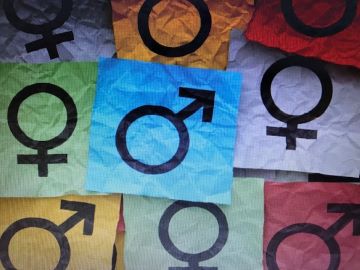What’s In a Name…or a Pronoun?
 I was washing the windows of our Seattle duplex when Tillie, the little girl upstairs, came down to say hello.
I was washing the windows of our Seattle duplex when Tillie, the little girl upstairs, came down to say hello.
The previous day, the two of us had been busy building “nests for squirrels” – Tillie’s idea was to pile up leaves and load them with bread crumbs and a couple of pistachio nuts, then check daily to see if the local squirrels had eaten the bounty we’d offered them.
“Hi, Miss Tillie!” I said brightly. “Time to check the nests?”
Tillie frowned, hands on hips. “I am not a ‘Miss,’” she said sternly. “My pronouns are they/them.”
This seemed like a big revelation coming from a six-year-old. Or was it? I knew my reaction would be key.
“Oh, okay,” I shrugged. “Thanks for letting me know. My pronouns are she/her.”
And we checked the squirrel nests.
Since then, I’ve thought a lot about our exchange. When do kids actually know they’re gay, or nonbinary, or any of the plethora of gender identities that didn’t exist when I was a six-year-old? Or maybe they did exist, but I wasn’t aware of them.
I’ve found a lot of research about this topic, primarily for parents to help their young ones feel comfortable. It seems Tillie is right on target for this personal realization – experts say it often happens between ages 3 and 5.
According to the Pew Research Center, one in four Americans knows someone who prefers being referred to with gender-neutral pronouns – but almost half say they’d feel uncomfortable using them.
It’s certainly been a challenge in news editing. We’re working to acknowledge and respect people’s differences, which sometimes means bending the traditional, stodgy English language into new shapes.
It took a six-year-old to really help me understand why it’s important.
(Image credit: Professor25/iStockphoto)
